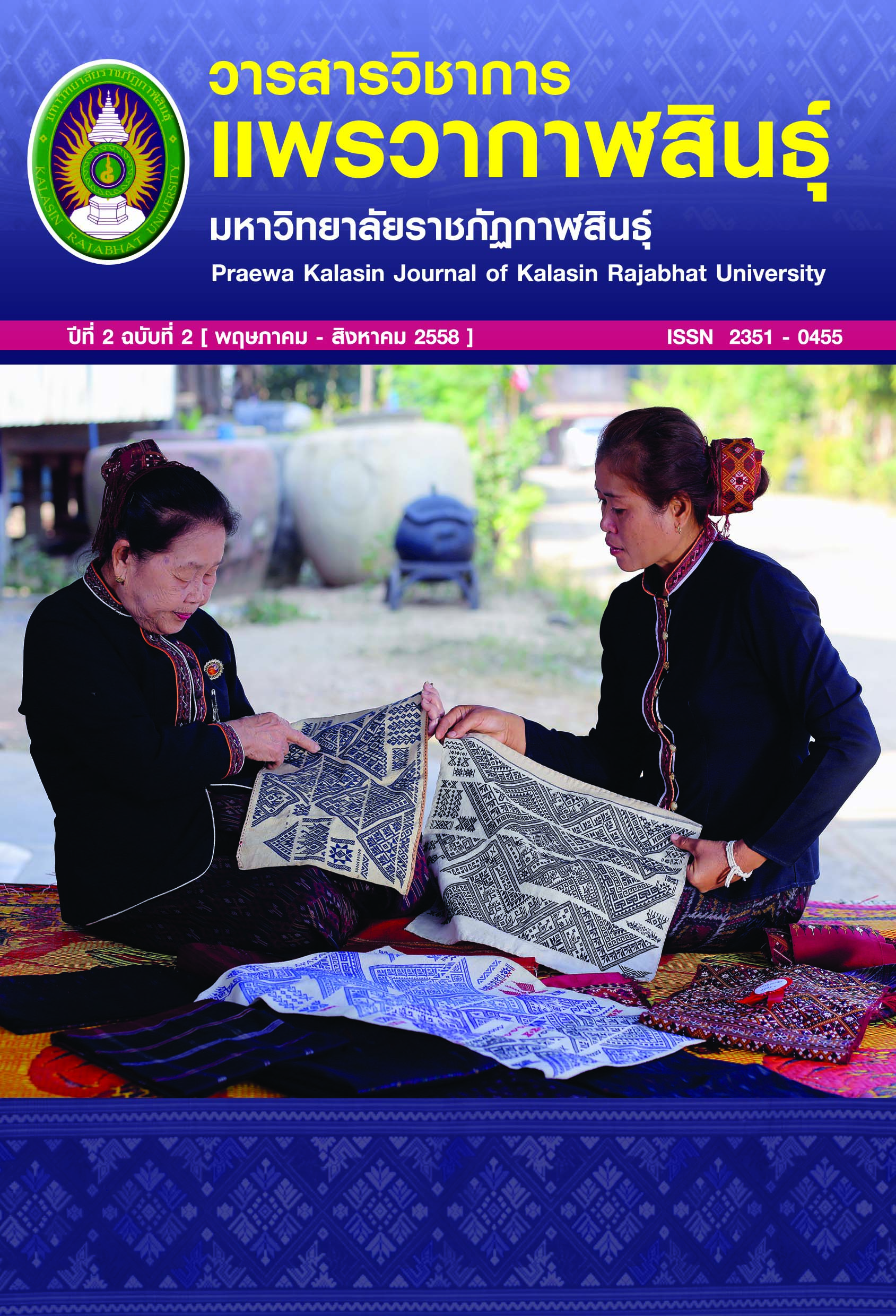A Development of Thai as a Second Language Instructional Model Based on Cultural and Community Approach by Integrating the Oral Approach with the Code-Swiching to Enhance Listening and Speaking Ability of Transition Students Towards First Grade
Main Article Content
Abstract
การวิจัยนี้มีวัตถุประสงค์ของการวิจัย คือ เพื่อพัฒนารูปแบบการเรียนการสอนภาษาไทยเป็นภาษาที่สองบนฐานของวัฒนธรรมและชุมชนโดยบูรณาการแนวการสอนพูดและวิธีการสลับภาษาเพื่อส่งเสริมความสามารถในด้านการฟังและการพูดสำหรับนักเรียนในช่วงรอยต่อระดับประถมศึกษาปีที่ 1 กลุ่มตัวอย่าง คือ นักเรียนในช่วงรอยต่อระดับประถมศึกษาปีที่ 1 ที่ใช้ภาษาไทยเป็นภาษาที่สอง ที่กำลังศึกษาอยู่ในภาคเรียนที่ 2 ปีการศึกษา 2557 โรงเรียนบ้านสังเม็ก จังหวัดศรีสะเกษ รวมทั้งสิ้น 18 คนโดยวิธีการสุ่มอย่างง่าย เครื่องมือที่ใช้ในการวิจัยคือ แบบวัดความสามารถในการฟังและการพูด ผลการวิจัยพบว่า รูปแบบการเรียนการสอนภาษาไทยเป็นภาษาที่สองบนฐานของวัฒนธรรมและชุมชนโดยบูรณาการแนวการสอนพูดและวิธีการสลับภาษาสามารถส่งเสริมความสามารถในด้านการฟังและการพูดสำหรับนักเรียนในช่วงรอยต่อระดับประถมศึกษาปีที่ 1
The purpose of this research was todevelop Thai as a second language instructional modelbased on cultural and community approach by integrating the oral approach with the code-switching to enhance listening and speaking ability of transition students towards first grade. The subjects for this research were 18 transition students towards first grade who used Thai as a second language from the 2st semester of 2014 in Sangmeg school in Srisaket province by using the simple random sampling technique. The instruments used in this research were listening and speaking ability test. The research showed that Thai as a second language instructional model based on cultural and community approach by integrating the oral approach with the code-switching can enhance listening and speaking ability of transition students towards first grade.
Article Details
Section
Articles (บทความ)

